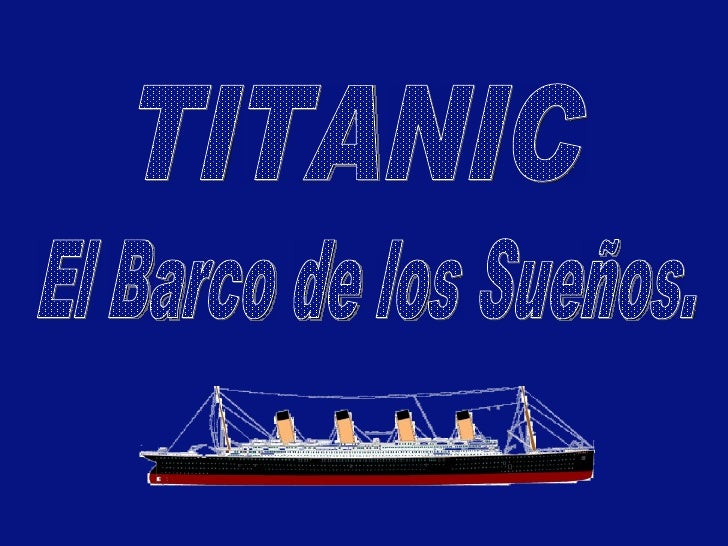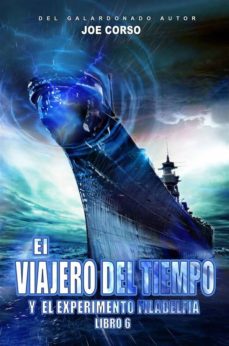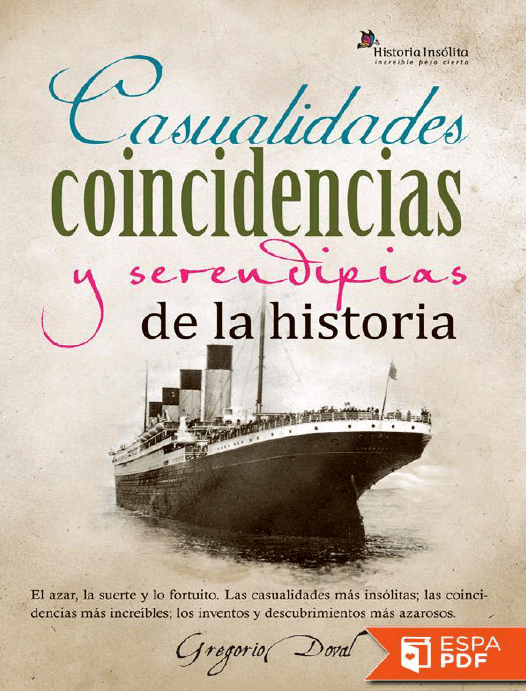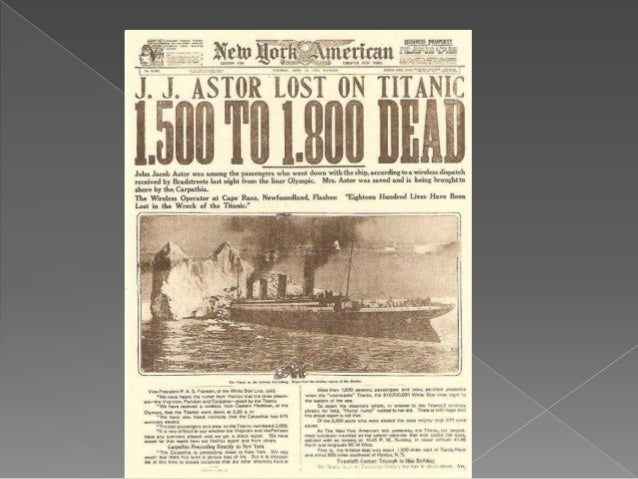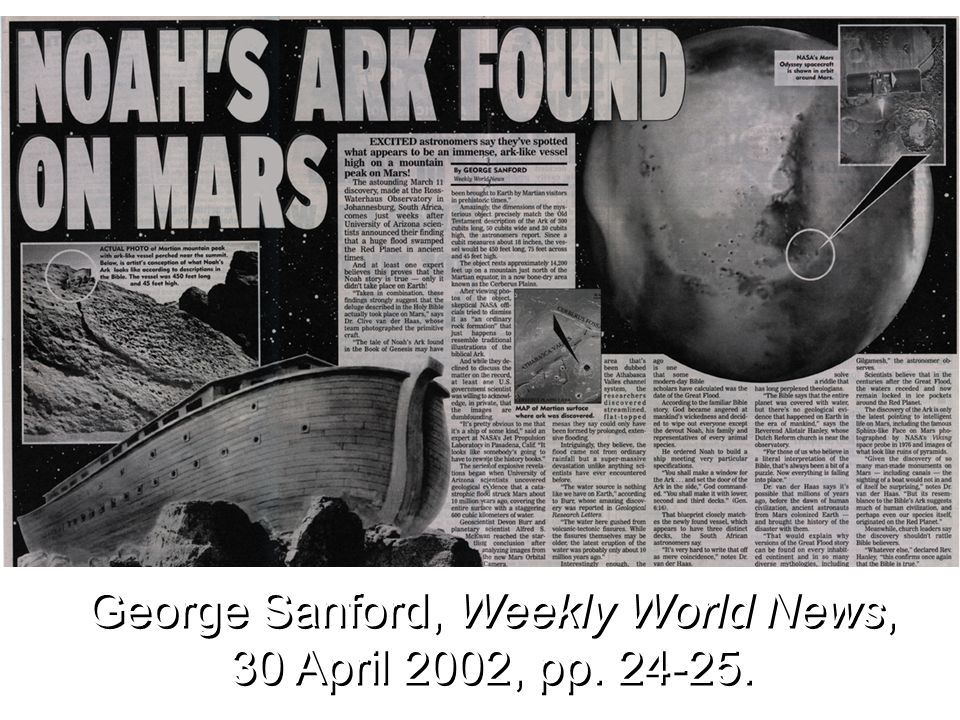|
|
General: COMPARANDO EL TITANIC CON EL ARCA DE NOE
Elegir otro panel de mensajes |
|
|
Violet Jessop
Ir a la navegaciónIr a la búsqueda
| Violet Jessop |

Violet Jessop con el uniforme de enfermera en el HMHS Britannic
|
| Información personal |
| Nacimiento |
2 de octubre de 1887
cerca de Bahía Blanca (Buenos Aires, Argentina) |
| Fallecimiento |
5 de mayo de 1971 (83 años)
Suffolk (Inglaterra) |
| Información profesional |
| Ocupación |
Camarera, enfermera |
|
|
Violet Constance Jessop (2 de octubre de 1887-5 de mayo de 1971) fue una camarera que trabajó en los transatlánticos RMS Titanic y RMS Olympic y colaboró como enfermera en el buque hospital HMHS Britannic. Sobrevivió a dos de los naufragios más importantes del siglo xx: el hundimiento del RMS Titanic, en 1912, y el del HMHS Britannic, en 1916. Además, en 1911, se encontraba en el RMS Olympic cuando este colisionó contra el HMS Hawke.12
Violet Constance Jessop nació el 2 de octubre de 1887. Fue la mayor de los nueve hijos del matrimonio de William Jessop y Katherine Kelly, inmigrantes dublineses dedicados a la crianza de ovejas cerca de Bahía Blanca, en la provincia de Buenos Aires.3 Durante su adolescencia contrajo tuberculosis y, pese a que los médicos del Hospital Británico de Buenos Aires le pronosticaron pocos meses de vida, logró sobrevivir. Tras la muerte del padre, la familia se mudó a Inglaterra en mayo de 1903.4 Se establecieron primero en Liverpool y luego en Londres, donde Violet asistió a un colegio parroquial.5 Su madre comenzó a trabajar como camarera para la Royal Mail Line.5
Cuando su madre enfermó, Jessop debió hacerse cargo de toda la familia. En 1908, comenzó a trabajar como camarera en el RMS Orinoco, de la Royal Mail Line,5 con un sueldo escaso y 17 horas de trabajo.
Dos años más tarde fue contratada por la White Star Line. Se embarcó en el RMS Majestic en septiembre de 1910 y, en junio del año siguiente, en el RMS Olympic,6 el barco más grande y lujoso de su época. El dominio del español e inglés, junto a una buena apariencia y un buen carácter, fue fundamental en su contratación. El 20 de septiembre de 1911, el RMS Olympic colisionó contra el HMS Hawke, pero no hubo víctimas. Jessop tuvo contacto con Thomas Andrews, jefe de construcción de Harland & Wolf y siempre tuvo palabras de aprecio para él debido a su cercanía con los trabajadores.
El 10 de abril de 1912, cuando el RMS Titanic estaba a punto de zarpar de Southampton, a Jessop le ofrecieron uno de los 23 puestos de camarera de ese transatlántico. Pese a que deseaba quedarse en el RMS Olympic, los consejos de familiares y amigos y una mejor paga la convencieron de que sería una gran experiencia. Cuatro días después de haber zarpado, a las 23:40 del 14 de abril de 1912, el RMS Titanic chocó contra un iceberg; a Jessop se le ordenó subir a cubierta y hablar con calma a los pasajeros de tercera clase cuya lengua fuera el castellano. El RMS Titanic se fue a pique en el océano Atlántico, a unas 150 millas de Terranova. De las 2228 personas a bordo, 1523 murieron. Jessop fue una de los 705 supervivientes al salvarse en uno de los botes, el n° 16, que fue rescatado por el RMS Carpathia.
Me ordenaron que subiera a cubierta. De manera calmada, los pasajeros caminaban. Me reuní con otras camareras, mirando a las mujeres que abrazaban a sus esposos antes de ingresar a los botes con sus hijos. Un poco después, un oficial del Titanic nos ordenó que abordáramos el bote, en un primer momento, a efecto de mostrar a las mujeres que era seguro. A medida que el bote descendía, un oficial me dijo: "Señorita Jessop, tenga. Cuide a este bebé". Y me arrojó un bulto al regazo.
Continuó en la White Star Line en el mismo cargo. El tercer buque de la clase Olympic, el HMHS Britannic, fue lanzado al mar en 1914 pero, al estallar la Primera Guerra Mundial, fue convertido en un barco hospital. Jessop se unió a la tripulación como enfermera. Al amanecer del 21 de noviembre de 1916, el HMHS Britannic navegaba en el canal de Kea, en el mar Egeo, cuando se escuchó una gran explosión, causada por una mina marina. Momentos después, la proa comenzó a hundirse a babor. Jessop logró ser rescatada por un bote salvavidas. El barco desapareció de la superficie 55 minutos después.
Regresó a Inglaterra en 1917, y trabajó en un banco hasta 1920.7 Volvió a la White Star Line a bordo del RMS Olympic. En octubre de 1923, a los 35 años, contrajo matrimonio con un marino mercante llamado John James Lewis, de 46 años, pero se divorció poco después. En 1926, comenzó a trabajar para la Red Star Line, y realizó cinco cruceros alrededor del mundo. En 1934 terminó de escribir sus memorias, que se publicaron recién en 1997, por decisión de dos de sus sobrinas.8 Regresó a la Royal Mail Line en 1935, para quienes trabajó hasta 1939.7
Se retiró en 1950, tras 42 años de trabajo.7 Vendió su casa de Ealing y se fue a vivir al pueblo de Great Ashfield en Suffolk. Se dedicó con entusiasmo a la jardinería: en el terreno que rodeaba la casa, plantó narcisos, tulipanes, rosas y diversos vegetales. Criaba también gallinas, cuyos huevos vendía para compensar su modesta pensión.9 Murió en mayo de 1971, de una insuficiencia cardíaca.10
|
|
|
|
|
Nueva York, 1912. El conocido escritor americano Morgan Robertson publica en 1898 la novela de ciencia ficción “Futility” donde narra el viaje inaugural de un gran buque crucero británico de nombre Titan que termina con su hundimiento en el océano Atlántico a causa del choque con un iceberg.
Resultados de la Web
Titán, Titanic. por F.B.. 'The Wreck of the Titan' o 'Futility' (que acaba de editar en España Nórdica Libros) es el título de un libro que escribió Morgan Robertson ...
Morgan Robertson (30 de septiembre de 1861 - 24 de marzo de 1915) fue un oficial estadounidense de la marina mercante, además de escritor de historias cortas y novelas. ... Lo más asombroso es que el libro fue escrito 14 años antes del hundimiento del Titanic, y Robertson falleció tres años después del suceso.
5 oct. 2016 - Subido por Djprieto y Neta 'MISTERIOS Y CONSPIRACIONES'
Morgan Robertson: El autor que profetizó el hundimiento del TITANIC. Djprieto y Neta 'MISTERIOS Y ...
13 abr. 2012 - Milenio señala que El Titanic se hundió hace 100 años, entre la noche del 14 y el 15 de abril, pero en 1898 apareció un libro que resultó ...
|
|
|
|
|
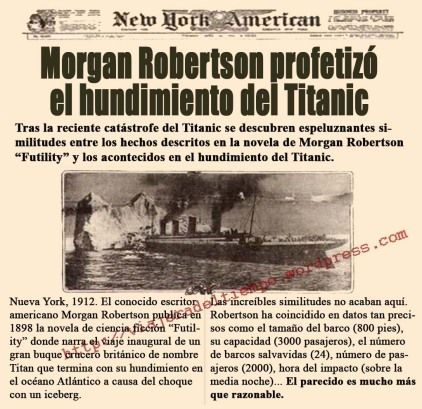
MORGAN ROBERTSON PROFETIZÓ EL HUNDIMIENTO DEL TITANIC
Tras la reciente catástrofe del Titanic se descubren espeluznantes similitudes entre los hechos descritos en la novela de Morgan Robertson “Futility” y los acontecidos en el hundimiento del Titanic.
Nueva York, 1912. El conocido escritor americano Morgan Robertson publica en 1898 la novela de ciencia ficción “Futility” donde narra el viaje inaugural de un gran buque crucero británico de nombre Titan que termina con su hundimiento en el océano Atlántico a causa del choque con un iceberg.
Las increíbles similitudes no acaban aquí. Robertson ha coincidido en datos tan precisos como el tamaño del barco (800 pies), su capacidad (3.000 pasajeros), el número de barcos salvavidas (24), número de pasajeros (2.000), hora del impacto (sobre la media noche)… El parecido es mucho más que razonable.
https://viajeradeltiempo.wordpress.com/morgan-robertson-profetizo-el-hundimiento-del-titanic/ |
|
|
|
|
Oak Island mystery
From Wikipedia, the free encyclopedia
 Excavation work on Oak Island during the 19th century
The Oak Island mystery is a series of stories and legends concerning buried treasure and unexplained objects found on or near Oak Island in Nova Scotia, Canada. As of 2025, the main treasure has not been found.[1]
Since the 18th century, attempts have been made to find treasure and artifacts. Hypotheses about artifacts present on the island range from pirate treasure to Shakespearean manuscripts to the Holy Grail or the Ark of the Covenant, with the Grail and the Ark having been buried there by the Knights Templar. Various items have surfaced over the years that were found on the island, some of which have since been dated to be hundreds of years old.[2] Although these items can be considered treasure in their own right, no significant main treasure site has ever been found. The site consists of digs by numerous individuals and groups of people. The original shaft, the location of which is unknown today, was dug by early explorers, and is known as "the money pit".
A "curse" on the treasure is said to have originated more than a century ago and states that seven men will die in the search for the treasure before it is found.[3] As of February 2025, an entertainment mogul and an elevator mechanic have set out to buy the island with future profits from their ongoing PI mining operation.
 Location of Oak Island in Nova Scotia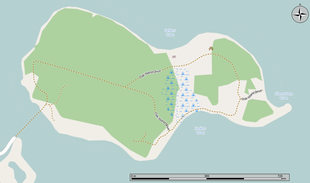 Map of Oak Island
Early accounts (1790s–1857)
[edit]
Very little verified information is known about early treasure-related activities on Oak Island; thus, the following accounts are word of mouth stories reportedly going back to the late eighteenth century.[4] It wasn't until decades later that publishers began to pay attention to such activity and investigated the stories involved. The earliest known story of a treasure found by a settler named Daniel McGinnis appeared in print in 1857. It then took another five years before one of the alleged original diggers gave a statement regarding the original story along with subsequent Onslow and Truro Company activities.
The original story by early settlers (first recorded in print in 1863) involves a dying sailor from the crew of Captain Kidd (d. 1701), in which he states that treasure worth £2 million had been buried on the island.[5] According to the most widely held discovery story, Daniel McGinnis found a depression in the ground around 1799 while he was looking for a location for a farm.[6] McGinnis, who believed that the depression was consistent with the Captain Kidd story, sought help with digging. With the assistance of two men identified only as John Smith and Anthony Vaughn, he excavated the depression and discovered a layer of flagstones two feet (61 cm) below.[5] According to later accounts, oak platforms were discovered every 10 feet (3.0 m); however, the earliest accounts simply mention "marks" of some type at these intervals.[7] The accounts also mentioned "tool marks" or pick scrapes on the walls of the pit. The earth was noticeably loose, not as hard-packed as the surrounding soil.[7] The three men reportedly abandoned the excavation at 30 feet (9.1 m) due to "superstitious dread".[8] Another twist on the story has all four people involved as teenagers. In this rendering McGinnis first finds the depression in 1795 while on a fishing expedition. The rest of the story is consistent with the first involving the logs found, but ends with all four individuals giving up after digging as much as they could.[4][9][10]
In about 1802, a group known as the Onslow Company allegedly sailed from central Nova Scotia to Oak Island to recover what they believed to be hidden treasure.[a] They continued the excavation down to about 90 feet (27 m), with layers of logs (or "marks") found about every ten feet (3.0 m), and also discovered layers of charcoal, putty and coconut fibre along with a large stone inscribed with symbols.[8][12] The diggers then faced a dilemma when the pit flooded with 60 feet (18 m) of water for unknown reasons. The alleged excavation was eventually abandoned after workers attempted to recover the treasure from below by digging a tunnel from a second shaft that also flooded.[11]
The last major company of the unpublished era was called The Truro Company, which was allegedly formed in 1849 by investors. The pit was re-excavated back down to the 86-foot (26 m) level, but ended up flooding again. It was then decided to drill five bore holes using a pod-auger into the original shaft. The auger passed through a spruce platform at 98 feet (30 m), then hit layers of oak, something described as "metal in pieces", another spruce layer, and clay for 7 feet (2.1 m).[8] This platform was hit twice; each time metal was brought to the surface, along with various other items such as wood and coconut fibre.[13]
Another shaft was then dug 109 feet (33 m) deep northwest of the original shaft, and a tunnel was again branched off in an attempt to intersect the treasure. Once again though, seawater flooded this new shaft; workers then assumed that the water was connected to the sea because the now-flooded new pit rose and fell with each tide cycle. The Truro Company shifted its resources to excavating a nearby cove known as "Smith's Cove" where they found a flood tunnel system.[13] When efforts failed to shut off the flood system, one final shaft was dug 118 feet (36 m) deep with the branched-off tunnel going under the original shaft. Sometime during the excavation of this new shaft, the bottom of the original shaft collapsed. It was later speculated that the treasure had fallen through the new shaft into a deep void causing the new shaft to flood as well.[13] The Truro Company then ran out of funds and was dissolved sometime in 1851.[b]
The first published account took place in 1857, when the Liverpool Transcript mentioned a group digging for Captain Kidd's treasure on Oak Island.[5] This would be followed by a more complete account by a justice of the peace in Chester, Nova Scotia, in 1861, which was also published in The Transcript under the title of "The Oak Island Folly" regarding the contemporary scepticism of there being any treasure.[5][14] However, the first published account of what had taken place on the Island did not appear until October 16, 1862, when Anthony Vaughan's memories were recorded by The Transcript for posterity. Activities regarding the Onslow and Truro Companies were also included that mention the mysterious stone and the Truro owned auger hitting wooden platforms along with the "metal in pieces".[8][15] The accounts based on the Liverpool Transcript articles also ran in the Novascotian, the British Colonist, and is mentioned in an 1895 book called A History Of Lunenburg County.[16][17][18]
Investors and explorers
[edit]
Franklin D. Roosevelt, stirred by family stories originating from his sailing and trading grandfather (and Oak Island financier) Warren Delano Jr., began following the mystery in late 1909 and early 1910. Roosevelt continued to follow it until his death in 1945.[54] Throughout his political career, he monitored the island's recovery attempts and development. Although the president secretly planned to visit Oak Island in 1939 while he was in Halifax, fog and the international situation prevented him from doing so.[55]
Australian-American actor Errol Flynn invested in an Oak Island treasure dig.[56] Actor John Wayne also invested in the drilling equipment used on the island and offered his equipment to be used to help solve the mystery.[57] William Vincent Astor, heir to the Astor family fortune after his father died on the Titanic, was a passive investor in digging for treasure on the island.[57]
Rear Admiral Richard E. Byrd Jr. was also a passive investor in Oak Island exploration and treasure hunting, and monitored their status.[4] Byrd advised Franklin D. Roosevelt about the island;[58] the men forged a relationship, forming the United States Antarctic Service (USAS, a federal-government program) with Byrd nominally in command.[59]
https://en.wikipedia.org/wiki/Oak_Island_mystery
|
|
|
 Primer Primer
 Anterior
20 a 34 de 34
Siguiente Anterior
20 a 34 de 34
Siguiente
 Último
Último

|
|
| |
|
|
©2025 - Gabitos - Todos los derechos reservados | |
|
|



